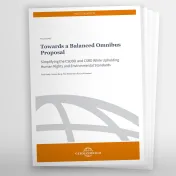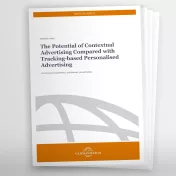
To this date, environmental due diligence has hardly been integrated into legislations and it is not yet as concrete as UN Guiding Principles on Business and Human Rights are in regard to human rights concerning responsibilities of corporations. Human rights due diligence captures environmental destruction when it is directly linked to human rights violation like a toxic spillage, which directly causes death or health issues. But it is clear that without an environmental dimension to due diligence legislations the 1) destruction of biodiversity, climate and other environmental damage that not directly leads to human rights abuses and 2) destruction that cumulatively adds up and leads to human rights abuses by corporations in the long run will be very difficult to tackle. The debate on environmental due diligence is of special relevance at the moment as there are several new horizontal due diligence legislations being drafted at the moment amongst others by the European Union. This planned legislation is meant to be a human rights and environmental due diligence legislation. As this study will show, the inclusion of environmental due diligence is a crucial step in order to prevent environmental disaster and further loss of biodiversity. Moreover it highlights some important aspects that have to be considered when further developing the concept of environmental due diligence.
The case of the planned copper mine Llurimagua
This study illustrates the case of a potential copper mining project Llurimagua in the zone Intag in Ecuador, located in a cloud forest characterised by high rainfall and high biodiversity. It lays out the history of mining companies in the region and based on different scientific studies the huge environmental impact a mining operation would have. It is an interesting case in this respect as the potential impact is well documented by an independent environmental impact assessment of the Japanese State. The main author Carlos Zorilla works with the NGO Decoin and has been involved in the fight against mining operations in Intag to protect the unique nature in the area for the past 26 years. He also contributed to the launching of initiative and businesses that provide alternative economic incomes to mining and gathered a lot of knowledge about processes around the start of mines and its impact on the environment with which he contributes to this paper. Apart from illustrating the case, Carlos Zorilla outlines different environmental red lines as well as specific detailed criteria which should be evaluated in the context of environmental due diligence. This evaluation can also imply that specific regions have to be declared as “No-Go-Zones”. All in all this case study shows why it is so important to include environmental due diligence into legal due diligence frameworks and what aspects have to be considered when putting it into practice.



